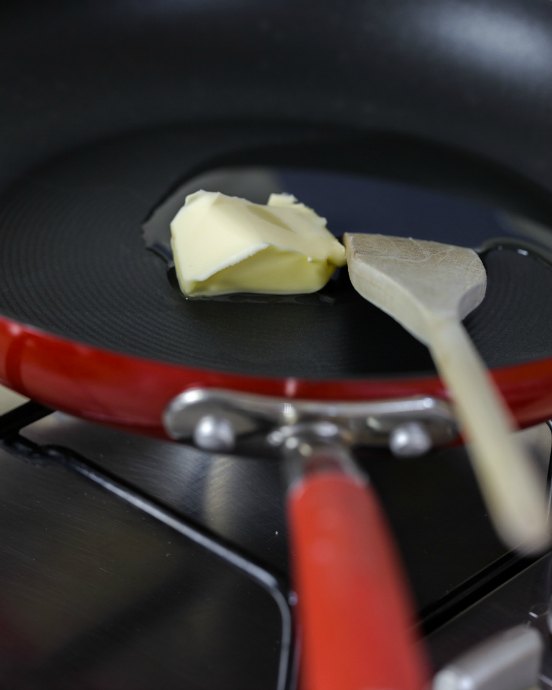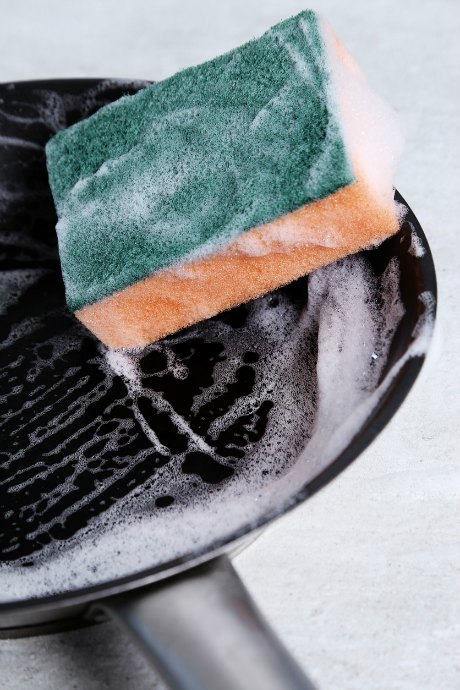Types of Cookware: Nonstick
Posted by Julie on May 7th 2018
Most people automatically reach for nonstick cookware when shopping. From the invention of Teflon 80 years ago to the wide variety of brands, materials, and nonstick coatings available today, nonstick cookware remains popular among home cooks. But does it live up to the hype?
We covered stainless steel cookware and cast iron cookware in the past two weeks. Now it's time to explore the pros and cons of nonstick cookware. Here's what you ought to know before joining the crowd and buying nonstick cookware for your own kitchen.
The Basics of Nonstick Cookware
Most nonstick cookware is made from aluminum. Aluminum is lightweight and an excellent conductor of heat. It also reacts with food and is comparatively softer than stainless steel or cast iron. Anodization is an electrochemical process that hardens aluminum and makes it nonreactive. Anodization also imparts nonstick properties to aluminum. Some nonstick cookware includes a stainless steel disk base to make it compatible with induction cooktops.
Many brands advertise their nonstick cookware as being PTFE- and PFOA-free. PTFE is the abbreviation for polytetrafluoroethylene, also known as Teflon. PFOA is the abbreviation for perfluorooctanoic acid, which has been used to make PTFE. While PTFE is not a suspected carcinogen, it is unclear what long-term effects PFOA may have. The American Cancer Society states that nonstick cookware is "not a significant source of PFOA exposure."
Pros and Cons of Nonstick Cookware
When it comes to cooking eggs, nonstick cookware can't be beat. Omelets, frittatas, and other egg dishes slide right out of properly maintained nonstick pans. Nonstick cookware is also user-friendly for new chefs. However, nonstick cookware isn't nearly as good as stainless steel and cast iron for searing and browning. Sometimes you want food to stick a little bit!

Nor does nonstick cookware hold up over time the way stainless steel and cast iron do. Even the most high-quality nonstick pans will need to be replaced as the coating wears down. The pan may have a lifetime warranty, but the nonstick coating does not. The good news is you can extend the life of your nonstick cookware by caring for it properly.
Not much effort is required to clean nonstick cookware. Some sources suggest seasoning nonstick by rubbing oil onto the surface after cleaning, or even coating your pan with oil and baking in the oven. We've never tried it, but we would defer to manufacturer recommendations.
Tips for Using Nonstick Cookware
The top recommendation concerning nonstick cookware that is most frequently violated: Turn down the heat! Nonstick cookware is not meant to be used with high heat. Low to medium will suffice, and never above medium high. High temperatures degrade the nonstick coating and release chemical fumes.

While nonstick cookware doesn't require much oil or butter, a little bit at the beginning will help keep your food from adhering to the pan. Do not use cooking sprays; they will form a sticky layer on your pan that you'll have to scrub off.
Even if the manufacturer's instructions say you can use metal utensils, our advice is: Don't do it. Perhaps they won't visibly scratch the surface, but just like high heat, they will start to weaken and wear away the coating, which shortens the life of your cookware. If you notice bits of the coating starting to flake or chip, it's time to go shopping.

Finally, don't put nonstick cookware in the dishwasher. It can't handle high heat on the stove, and it can't handle high heat in the dishwasher either. Plus, the harsh detergents in dishwasher soap will break down the nonstick coating. Always hand wash your nonstick cookware to ensure it lasts as long as possible.
Nonstick Cookware Recommendations
If you're still stuck firmly in the nonstick cookware camp, we recommend Swiss Diamond cookware. Their nonstick coating contains real diamonds, which are naturally nonstick and excellent heat conductors. Each pan receives three layers of this coating. Swiss Diamond also recommends washing each piece by hand and using non-metal utensils. Their guidance is right in line with everything we know about how to make nonstick cookware last as long as possible.
Check back next week for the final post in this series, where we'll cover copper cookware.
 Free shipping over $49
Free shipping over $49










